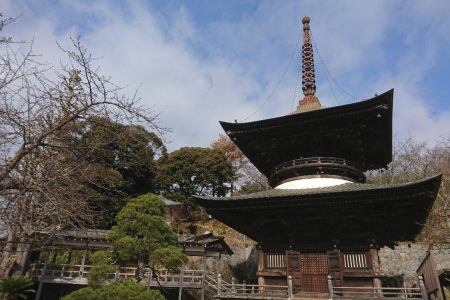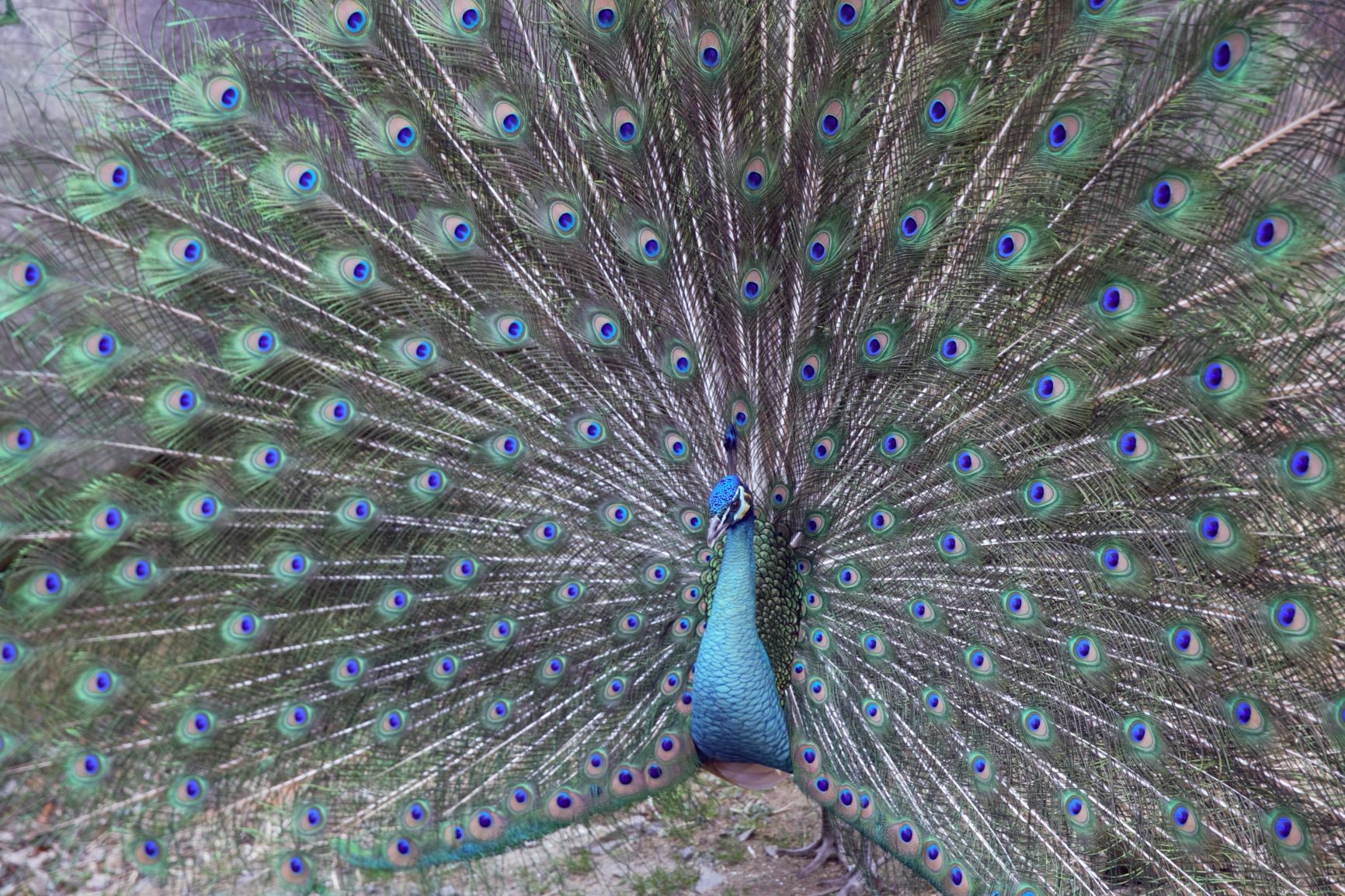This is a temple opened in 587 A.D. by a Buddhist monk who returned from China. Literally translated, this is a survival Kannon Bodhisattva and it is designated a national important cultural artifact. It is known as a temple to pray for a safe and easy birth of a child as well as to pray for help in raising health children. It became known for this in the 8th century when the Emperor Shomu prayed for a safe and easy birth as his wife, the Empress Komyo went into labor.
After climbing the 154 stone steps aimed at deterring evil spirits, you will see the gates with intricate carvings. Beyond that, you will see the elegant temple and towers built during the Edo Period. You will also see a cedar tree planted over 400 years ago as well as a beech tree planted over 1000 years ago. You can feel history permeating the area. On the grounds roam peacocks and exotic chickens which are both elegant and delightful. In the springtime people flock to the area to see these peacocks and exotic chickens as these glorious birds look as if they just stepped out of an ancient Japanese painting.
Peacocks were brought to Japan at the end of the 6th century, they are said to be given to Empress Suiko from the Kingdom of Silla. The elegance and fantastical form stoked the creativity of many artists including the painter Kanoh Eitoku of the Azuchi-Momoyama period who is known for his “Sakura and Peacocks” painting. Peacocks are often seen adorning the walls of temples and palaces, painted by the Kanoh-group of artists.
You can view the entire Kanto region from here, Mt. Fuji in the distance and Mt. Tsukuba in the foreground. In the spring the cherry blossoms bloom and in the fall the foliage is particularly stunning.
On the second Sunday of April the Madara Kishin Festival takes place. Here the Madara Kishin (a kind of oni, a Japanese ogre) on horseback runs up the stone steps. The ogres dance and the kishin (an oni god) shoots arrows to dispel and destroy evil spirits. It’s a sight to behold.

As if you are looking at an old painting, on the grounds of Amabikisan Rakuho Temple roam beautiful peacocks, they are popular with everyone who visits.
Peacocks were brought to Japan at the end of the 6th century, they are said to be given to Empress Suiko from the Kingdom of Silla. The elegance and fantastical form stoked the creativity of many artists including the painter Kanoh Eitoku of the Azuchi-Momoyama period who is known for his “Sakura and Peacocks” painting. Peacocks are often seen adorning the walls of temples and palaces, painted by the Kanoh-group of artists.
You will also see peacocks in paintings by Ito Jakuchu and also by Maruyama Ohkyo.
Peacocks are not the only birds that you will see roaming here. Silkies, long-tailed chicken, ducks, and Japanese bantam chickens also walk around the premises. Yes. It’s like the world you see in paintings recently popular in Japan, those by Ito Jakuchu. Do come take a look.
【Address:Motoki 1,Sakuragawa Hours:8:30am ~ 5:00pm】





